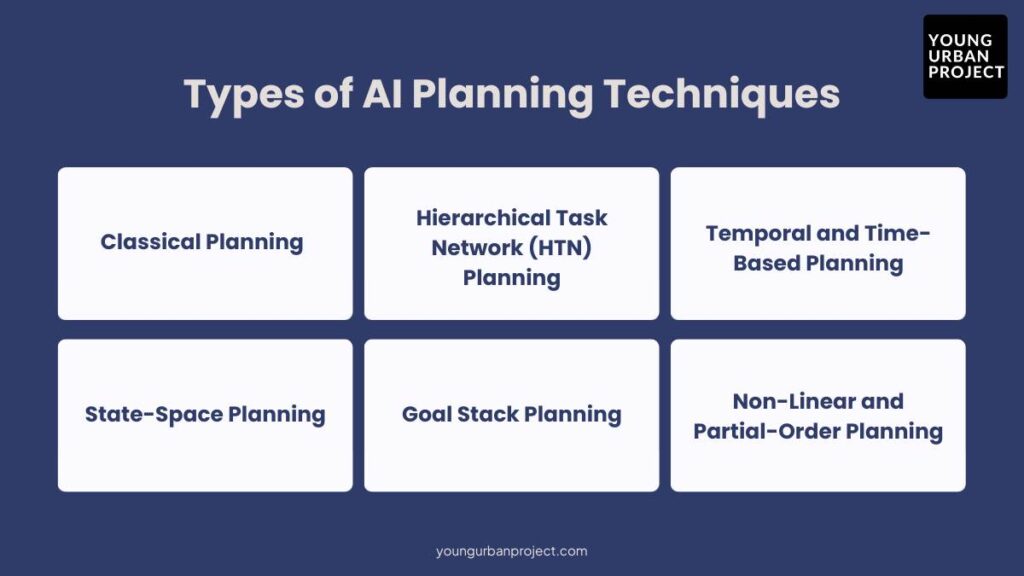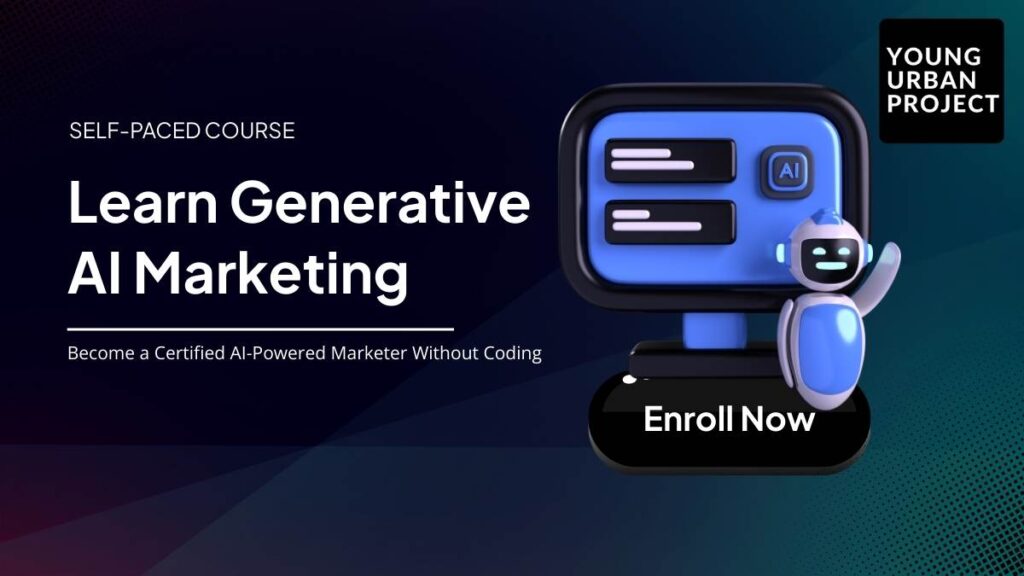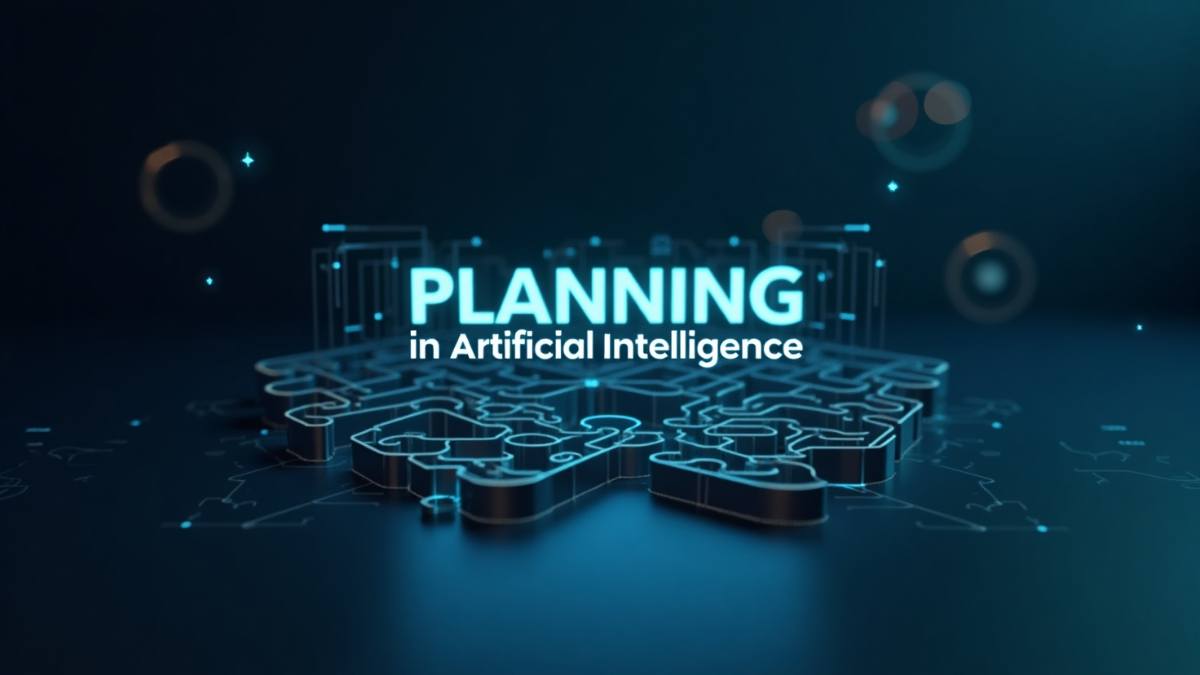Ever wondered how a self-driving car knows not just where it is but where it’s going next, and exactly how to get there? Or how a warehouse robot zips around without bumping into shelves (or coworkers)? Well, that’s planning in action. Specifically: planning in artificial intelligence.
Table of Contents
At its core, planning in AI is about charting a course of action. It helps machines decide what steps to take next to achieve a goal, whether that’s navigating a busy street or figuring out how to allocate hospital beds during a crisis.
And honestly? It’s one of the most fascinating and quietly powerful pieces of the AI puzzle.
In this blog, we’ll unpack what planning in AI really means, why it’s such a game-changer, the types you should know, and where it’s making a difference in the real world (spoiler: everywhere from healthcare to logistics). Let’s jump in.
Planning in Artificial Intelligence
So what is planning in AI, exactly?
In simple terms, it’s the process of creating a sequence of actions that will take an AI system from its current state to a desired goal. Think of it as the AI’s version of drawing up a game plan.
For humans, planning might look like using Google Maps to plot the fastest route to a café. In AI? It’s the same principle but applied to, well, everything, from robots assembling cars to algorithms managing supply chains.
The key difference? Unlike us, AI systems don’t “wing it.” Their planning is deliberate, rule-based, and (ideally) optimized to squeeze out maximum efficiency.
In a nutshell: Planning in artificial intelligence supports intelligent decision-making by allowing machines to figure out what steps to take, and in what order, to achieve specific outcomes.
Why Planning is Crucial in AI Systems
Why do we care so much about planning in AI? I mean, can’t we just tell machines what to do?
Well, yes and no.
In many cases, especially with autonomous systems, the whole point is to let machines figure out their own paths. AI planning:
- Enables autonomy: Robots, drones, and even digital assistants rely on planning to act independently.
- Boosts efficiency: A well-planned route saves time, resources, and energy (whether it’s a robot arm or a delivery truck).
- Makes AI adaptable: Life’s messy. Planning lets AI systems pivot when conditions change unexpectedly.
Another cool thing? AI planning often works hand-in-hand with machine learning and reasoning. While ML focuses on learning patterns, planning focuses on applying that learning to take action. It’s like ML figures out what’s true, and planning decides what to do about it.
Also Read: AI for Market Research
Types of AI Planning Techniques
There’s no one-size-fits-all when it comes to AI planning. Different scenarios need different approaches. Let’s break down the main types.

1. Classical Planning
This is the OG of AI planning, based on clean, predictable environments where everything is fully observable.
It’s often modeled using STRIPS (Stanford Research Institute Problem Solver), which breaks problems into:
- Preconditions (what needs to be true before an action)
- Effects (what becomes true after the action)
Example: A robot planning to pick up a box needs the box to be within reach (precondition), and after picking it up, the box is no longer on the floor (effect).
Classical planning works great when the world is tidy and deterministic. Not so much when things get messy.
2. Hierarchical Task Network (HTN) Planning
HTN planning is like breaking a big to-do list into smaller, manageable steps.
Example: Say a robot has to prepare a meal. HTN breaks that down into subtasks: gather ingredients, cook, serve.
It’s fantastic for structured domains, like industrial automation or military simulations, where tasks naturally decompose into sub-tasks.
Also Read: Rational Agents in AI: Working, Types and Examples
3. Temporal and Time-Based Planning
Here, we’re talking time-sensitive planning, where actions aren’t just about what and how, but also when.
Example: Scheduling hospital shifts or planning satellite communications where timing is critical.
This type helps with project management, scheduling, and any scenario with hard deadlines.
4. State-Space Planning
This one visualizes the problem as a map of states and transitions.
- Forward State-Space Planning (FSSP): Starts from the initial state and moves forward to reach the goal.
- Backward State-Space Planning (BSSP): Starts from the goal and works backward to figure out the starting point.
Each has pros and cons:
- FSSP: Easier to understand, but can be inefficient.
- BSSP: Often faster but trickier to set up.
5. Goal Stack Planning
This approach literally uses a stack data structure to manage goals and sub-goals. You can think of it like a decision tree that pushes and pops goals as it works through a problem.
It’s simple but surprisingly effective in structured, predictable environments.
6. Non-Linear and Partial-Order Planning
Sometimes, the order of actions isn’t set in stone. This type of planning allows flexibility in sequencing tasks, which is handy in dynamic or unpredictable settings.
Example: Setting a table. You can place the fork and knife in any order, they don’t depend on each other.

Enroll Now: AI Marketing Course
Key Applications of AI Planning
Where’s all this happening in the real world? Pretty much everywhere. Let’s group it out:
1. Smart Cities and Infrastructure
- Urban planning and resource allocation
- Traffic flow optimization to reduce jams and improve air quality
2. Autonomous Systems
- Self-driving cars navigating busy streets
- Robotics in factories, cleaning robots in malls
3. Supply Chain and Logistics
- Route optimization for deliveries (think Amazon)
- Inventory management in sprawling warehouses
4. Healthcare and Emergency Response
- Treatment planning for personalized medicine
- Crisis response, like planning the distribution of medical supplies during a pandemic
Also Read: What is an LLM in Generative AI?
5. AI in Government and Administration
- Policy simulations to test out “what-if” scenarios
- Automated resource deployment in emergencies
6. Risk Analysis and Dialogue Systems
- Crisis simulations (think: disaster response)
- Conversational AI that plans its next dialogue move (e.g., chatbots)
Also Read: AI in Marketing Strategy
How AI Planning is Evaluated
Good planning isn’t just about getting from A to B. It’s about doing it smartly.
Key metrics:
- Optimality: Is the plan the fastest, cheapest, or most efficient?
- Robustness: Can the plan handle surprises or uncertainty?
- Scalability: Does it still work when things get big and complex?
Also Read: 10 Essential Skills to Build AI Agents
Tools and Frameworks for AI Planning
Want to build your own AI planner? These are the go-tos:
- PDDL (Planning Domain Definition Language)
- Fast Downward
- SHOP2, Pyperplan
Many of these tools integrate well with Python and ROS (Robot Operating System) frameworks.
Also Read: Knowledge-Based Agents in AI
Challenges in AI Planning
It’s not all smooth sailing. Challenges include:
- High computational complexity (big plans = big headaches)
- Uncertainty and incomplete knowledge (life’s messy!)
- Real-time constraints (things change fast)
- Integration with learning systems (bridging planning and RL is still tricky)
Also Read: What is MCP in AI?
Emerging Trends and Future Directions
The future is exciting:
- Neuro-symbolic planning, combining neural networks and symbolic AI
- Multi-agent planning, teams of AIs working together
- Integration with LLMs and generative AI, imagine GPT-style models that don’t just chat but plan complex actions
- Adaptive planning in open-world environments
Also Read: What is Multimodal AI? The Future of AI
Conclusion
Planning in artificial intelligence is the backbone of intelligent action. Whether it’s self-driving cars, robots in factories, or digital assistants helping you plan a trip, AI planning is what keeps things moving smoothly.
As AI continues to evolve, planning will only become more integrated and smarter. The line between learning, reasoning, and acting? It’s blurring fast.
Also Read: What is Agentic AI? A Comprehensive Guide
FAQs: Planning in Artificial Intelligence
1. What is planning in artificial intelligence, and why is it important?
It’s the process of mapping out actions to achieve a goal. It’s crucial because it enables autonomy and intelligent decision-making.
2. What are the main types of planning techniques in AI?
Classical, HTN, Temporal, State-Space, Goal Stack, and Non-Linear planning are the key types.
3. How does AI planning differ from traditional decision-making?
Traditional decision-making often relies on human judgment; AI planning is systematic, rule-based, and often optimized.
4. Which industries are using AI planning the most?
Logistics, healthcare, automotive, smart cities, and government are big adopters.
5. What tools or frameworks are used for AI planning?
PDDL, Fast Downward, SHOP2, and Pyperplan are widely used.
6. Is AI planning the same as machine learning?
Not quite. ML focuses on learning patterns; planning focuses on applying actions based on those patterns.

